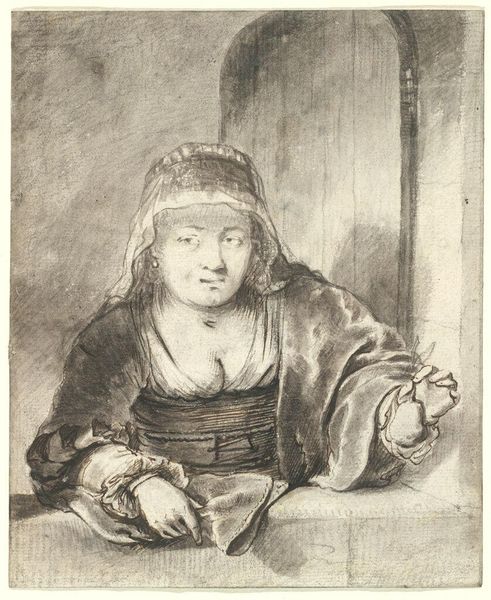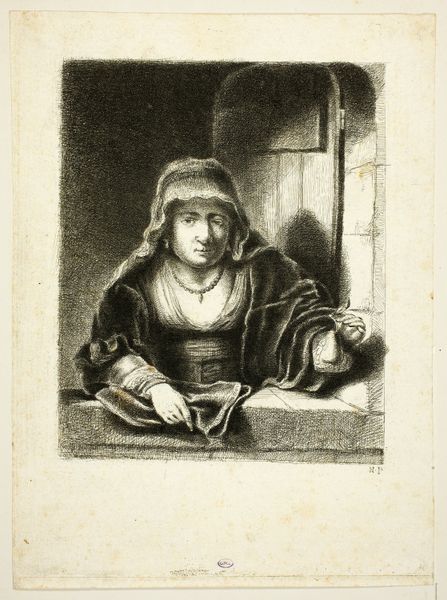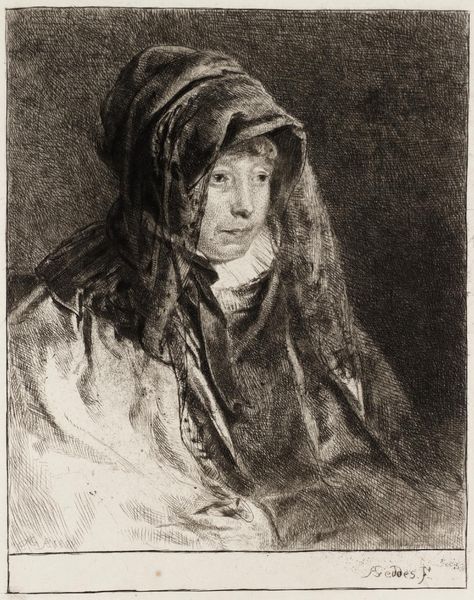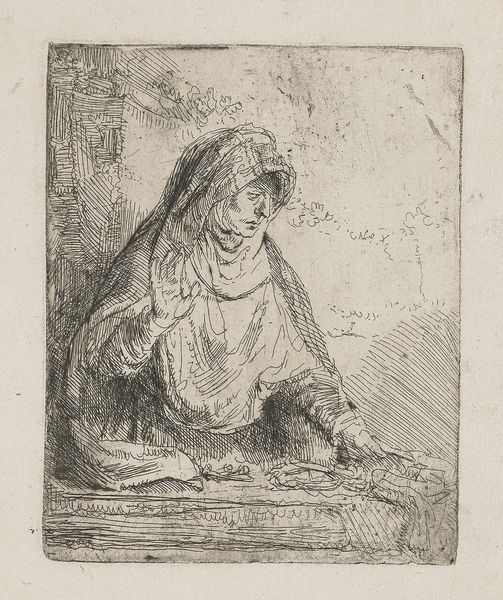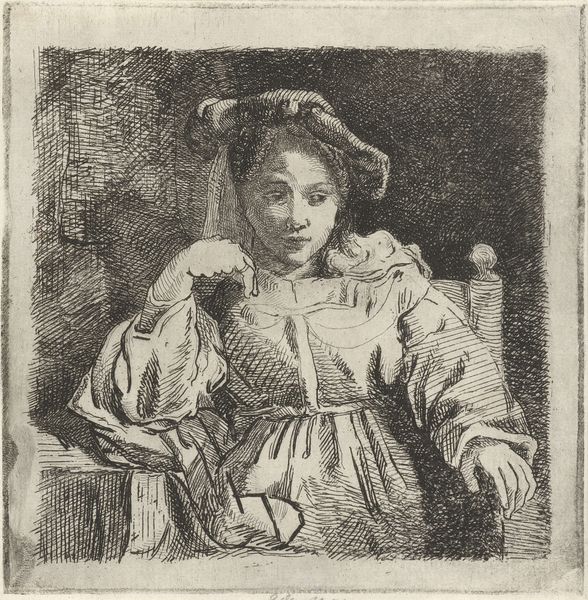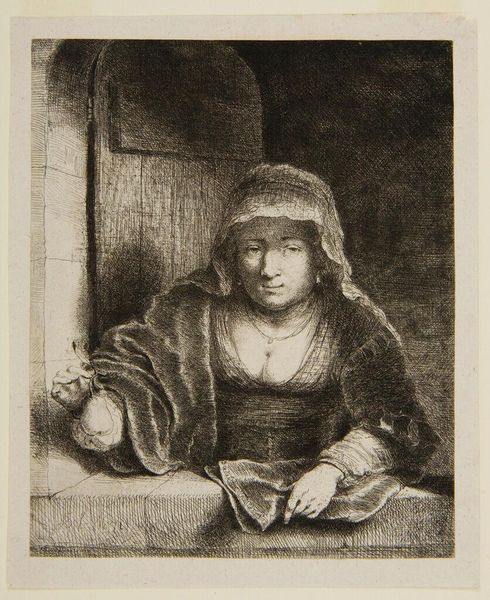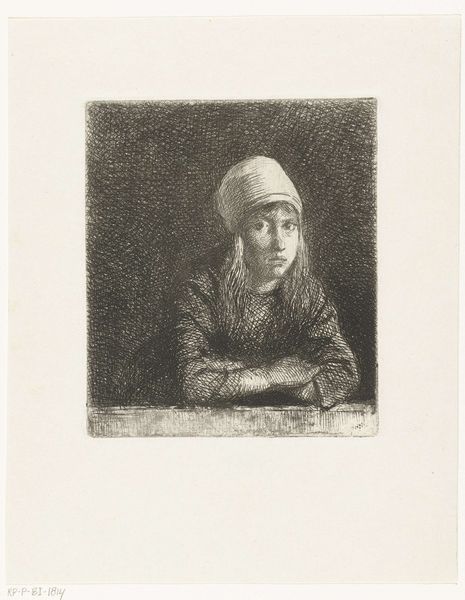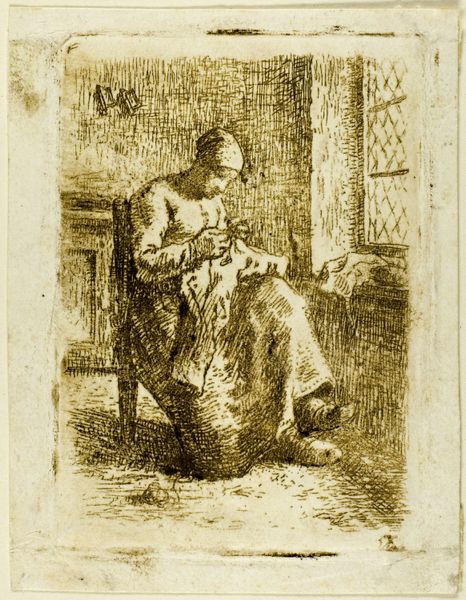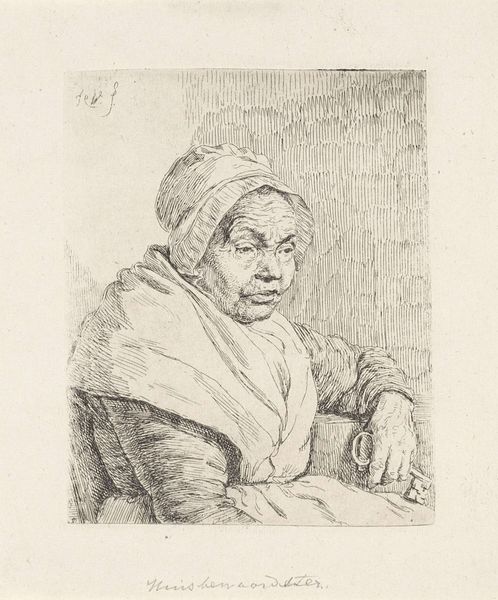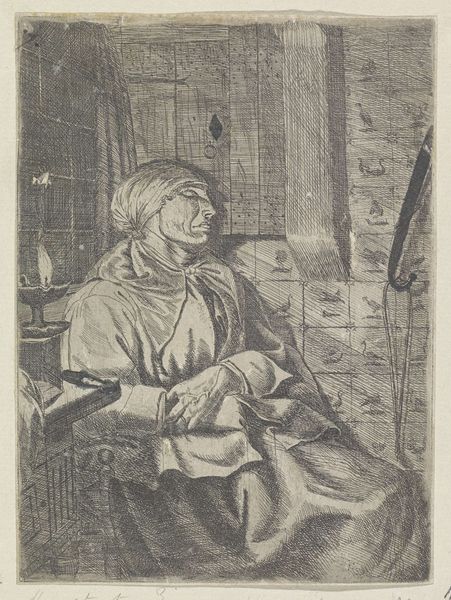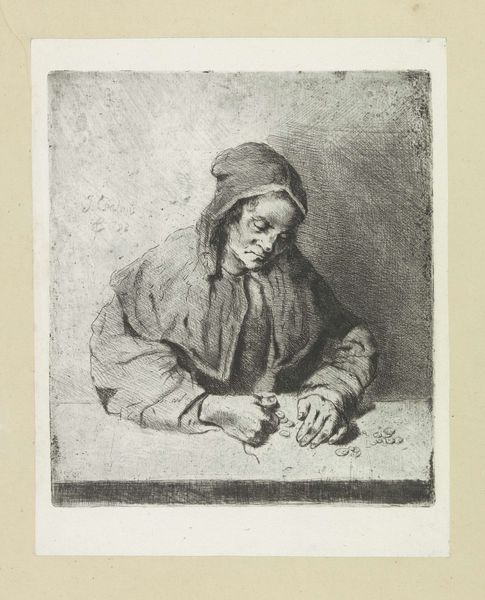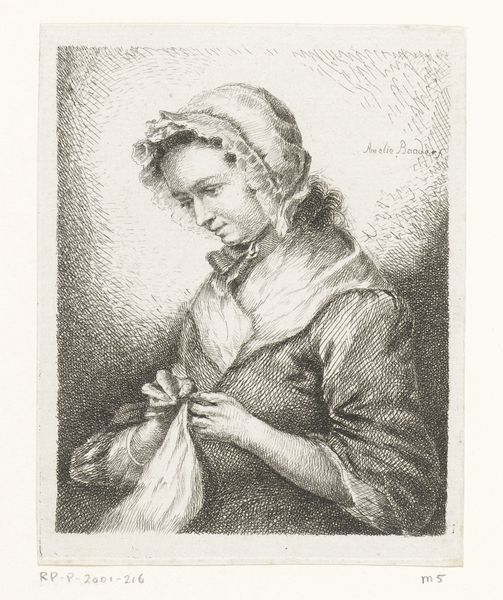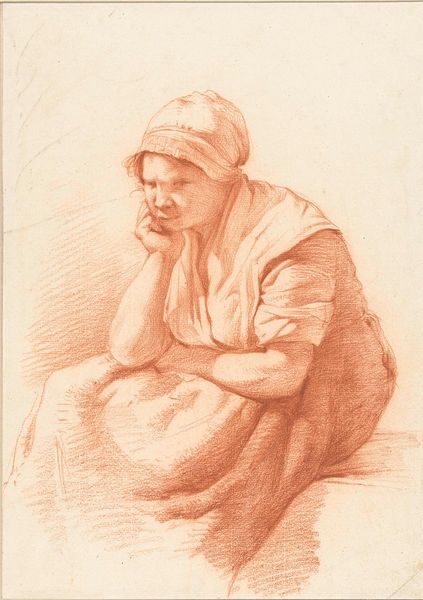
drawing, print, etching, paper
#
portrait
#
drawing
#
baroque
#
dutch-golden-age
# print
#
etching
#
figuration
#
paper
#
portrait drawing
Dimensions: 143 × 118 mm
Copyright: Public Domain
Curator: Look at this intriguing etching; it's Ferdinand Bol's "Woman with the Pear," created in 1651. It's part of the Dutch Golden Age. Editor: Oh, there's something so quietly compelling about it, isn't there? She seems…wistful. Like she’s peering out a window, lost in thought. The shading adds to this subdued, contemplative mood. Curator: It's fascinating how Bol uses light and shadow, really. The woman, rendered with such meticulous detail, is set against this more shadowy background, highlighting the figure, bringing her forward. It's a sophisticated piece of image management really. Editor: Precisely, it is as though he used darkness to sculpt light. I love the textures— the rough hatching that creates the feeling of fur, next to the smooth areas of her skin, which almost feels porcelain-like despite being tones of grey. I’m also fascinated by her clothes - I cannot but wonder about the implications. Curator: Contextually, these domestic scenes were fashionable within Dutch painting at that time, appealing to a wealthy middle class who increasingly patronised genre paintings as a mark of their new status, though in printed format and affordable to many more than original artworks could be. Bol here subtly positions women in relationship to their property and wealth, while appealing to moral conventions by not portraying her nobility too brazenly. Editor: The pear… is it just an everyday object, or is there more to it? Is it innocence, or perhaps something… less innocent, more worldly? The Dutch Masters were rarely as straightforward as they seem at first. Curator: Ah, the symbolic pear question. Perhaps suggesting something about the ephemerality of beauty, or just a delicious snack for an afternoon! Hard to tell, though considering the wider social context in which women's images became both signs of status, moral virtue, and the temptations of excessive comfort and earthly vanities - a pear would sit right there in the midst of this contested meaning making. Editor: It’s that ambiguity, that little bit of the unknown, that really grabs me, makes you want to spend a bit of time with her and the artwork as a whole. It's beautifully rendered, a delicate yet affecting print, a beautiful portrait and window onto a very specific time and place. Curator: A fine specimen of the portrait drawing within the historical context, well placed within a museum, where all viewers can have a moment of historical and aesthetic reverie!
Comments
No comments
Be the first to comment and join the conversation on the ultimate creative platform.
